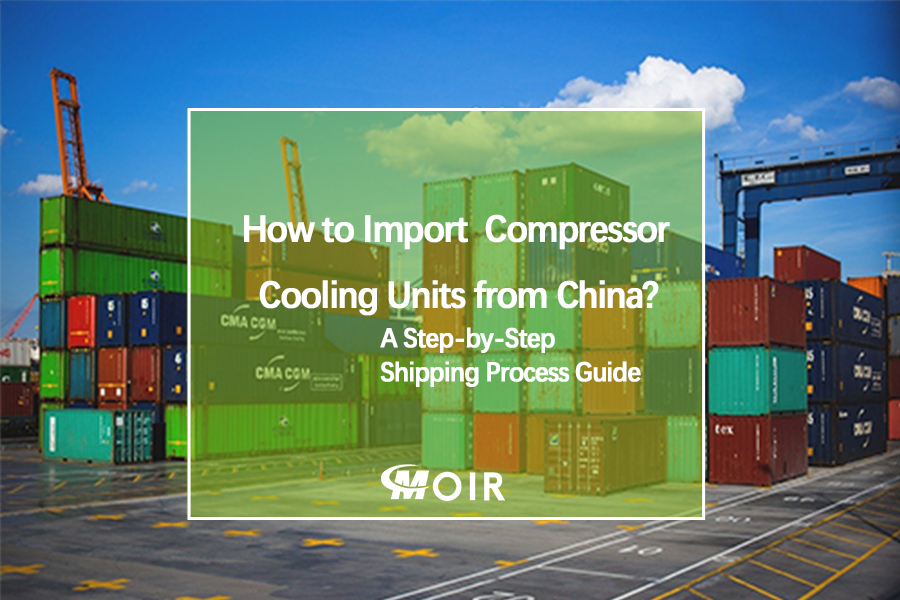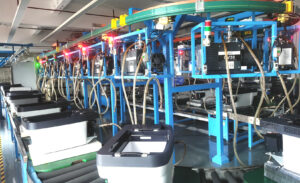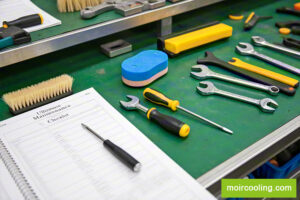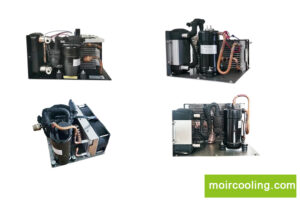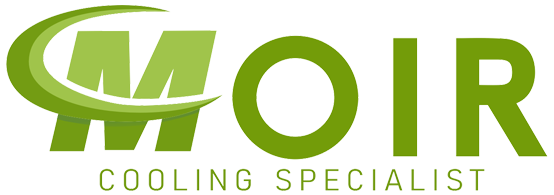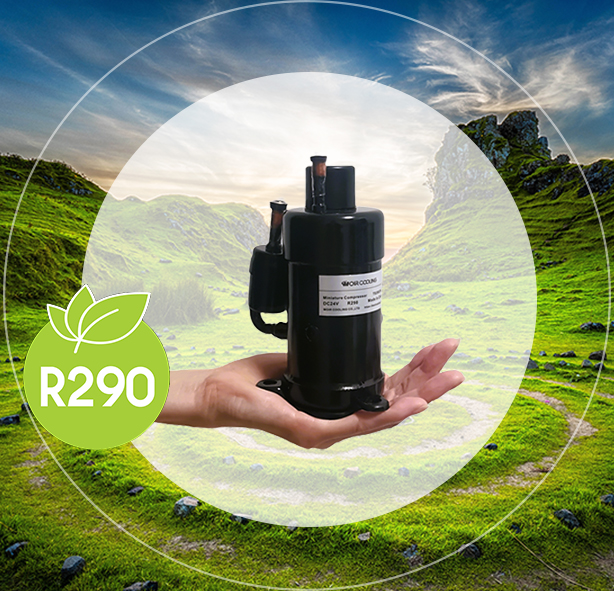Buying compact compressor cooling units from China can be a cost-effective and efficient way to source high-quality equipment for your business. However, it can be a tricky thing if you are not aware of the complete shipping process. This guide outlines a step-by-step shipping process on what to do on each stage to avoid potential hassles once your compact cooling units are ready to dispatch.
The shipping process can be divided into 22 steps.
Let’s walk through each of them together.
Step 1: Identify Needs and Product Selection
Importer: Identify your specific needs and expectation for a desired vapor-compression cooling systems. Consider factors such as cooling capacity, input voltage, cooling approach, refrigerant types, space constraints, target temperature, and also the price, supplier reputation etc.. Once having selected the supplier in good fit, discuss your requirements to ensure that the small cooling units meet your needs.
Read related article that help you selecting the right compressor cooling units you need. How to Choose the Right Compact Compressor Cooling Units?
Step 2: Negotiation and Contract Signing
Importer: Negotiate the terms and conditions of the purchase agreement, including price, payment terms, delivery schedue, and any other relevant details from the most preferred compact refrigeration system manufacturer. Fix the contract of sales & Order goods.
Step 3: Arranging Down Payment
Importer:Make a down payment to the small compressor cooling system supplier ( exporter) to prepare for production.
Step 4: Arrange Production
Exporter: Manufacturing of mini liquid chiller modules begins Timeline: 30~60 days prior to estimate date of shipping Note: Production lead time on small compressor cooling unit orders can run as short as 30 days to as long as 60 days depends on the market demand & supply.
Step 5: Book Shipping Space
Exporter: Reserve shipping space in the vessel for shipment and get a shipping order ( SO) or Booking Confirmation from shipping company. ( Shipping order mentions Booling No.; BL No., Vessle Name; Port of Loading, Port of Discharge, ETA, ETD, Cut-off time etc.)
Timeline: 10-20 days prior to estimate date of shipping.
Step 6:Pre-shipment Seaworthy Packing
Exporter:Arrange for packaging, labeling, and marking of small liquid chillers as per standard shipping practices
Timeline:6-8 days prior to estimate date of shipping
Step 7:Arrange Container Pickup
Exporter/Freight Forwarder:Pick up delivery order (DO) for container from shipping line and arranges for container pickup, stuffying and sealing. (Container No.; Seal No.will be informed. )
Timeline:8 days prior to estimate date of shipping
Step 8:Export Haulage
Exporter:Arrange carrier (containers)to pick up compact cooling units with seaworthy packing at the supplier’s premises
Timeline:5-7 days prior to estimate date of shipping
Step 9:Load Container
Exporter:Arrange container loading of ready machines at port or at exporter’s premise.
Timeline:4-6 days prior to estimate date of shipping
Step 10:Prepare Shipping Documents
Exporter: Prepare the necessary shipping documents, including Bill of Lading, Packing List, Commercial Invoice. These documents are crucial for customs clearance and other import procedures. Arranges documents check (check particularly goods description; HS Code, consignee/ notify party info) by sending drafted copy to importer for confirmation before submitting to custom of origin port.
Timeline:3-4 days prior to estimate date of shipping
Step 11:Export Custom Declaration
Exporter/Freight Forwarder:Submit a declaration detailing the cargo and supporting documents to China Custom.
Timeline:3-4 days prior to estimate date of shipping
Step 12:Custom Clearance
China Custom:China Custom Releases containers after documents check and custom inspections
Timeline:2-3 days prior to estimate date of shipping
Step 13:Containers on Board
Port Dock Workers:Load the port on scheduled ship. At the port, the container is stacked together with other containers intended to load on the same ship, and finally loaded when the ship is ready at the port.
Timeline:0-1 days prior to estimate date of shipping
Step 14:Ship takes off
Ship departures from Port of loading (Date of Shipping)
Notes: chances are big that shipping could delay for 1-7 days at some point that will be completely beyond importer & exporter’s control Reasons for Shipping Delay: bad weather condition, port congestion, custom inspection
Step 15:Courier Shipping Documents
Exporter:Get the original Bill of Lading (BL) from shipping line and other documents (Packing List, Commercial Invoice; Certificate of Analysis; Measurement List; Catalogue etc.courier hard copies to importer/consignee (3-5 working days after the ship takes off )
Timeline:3-7 working days prior to estimate date of shipping
Step 16:Arrival of Goods
Compact cooling units arrive at the port of destination of importer’s country
Timeline:5-50 days after estimate date of shipping. Transportation time Depends on direct or indirect shipping, shipping lines, Port of destination.
Step 17:Import Custom Clearance
Importer/Freight forwarder:
Submit the necessary shipping documents to the customs authorities and Pay any import duties or tax that may be applicable at the Port of Destination for import clearance. It is essential to ensure that all documents are accurate and compliant with the regulations of your country to avoid delays or penalties.
Timeline:2-4 days after estimate date of arrival
Step 18:Receive Containers
Importer:Take custody of the shipment
Timeline:2-4 days after estimate date of arrival
Step 19: Import Haulage
Importer:Arrange for transportation of wet wipes machines to final destination
Timeline:4-7 days after estimate date of arrival
Step 20:Unload Containers & Receive goods
Importer:Arranges unloading of the container & hands over empty container at appointed yard of the shipping line
Timeline:5-10 days after estimate date of arrival
Step 21: Inspection & Acceptance
Importer: Conduct a thorough inspection to ensure that the cooling units meet your demands and are in good conditon. If any issue are identified, promptly contact the supplier to solve it out.
Step 22: Post-Import Follow-Up
Importer/ Exporter: It is crucial to maintain a good relationship for both parties. This includes feedback on the cooling system’s performnance, addressing any issues that may arise, and exporting opportunities for future collaborations.
Conclusion:
Importing cooling systems based on microcompressor from China requires careful planning and execution. By following this step-by-step guide, you can ensure a smooth shipping process and successful delivery of your products.
Moir Cooling is a supplier providing compact compressor cooling systems and offering custom solutions. We will tie up all loose ends and eyeball on all procedures for your goods shipment. Opt for MOIR, Worry Less.
